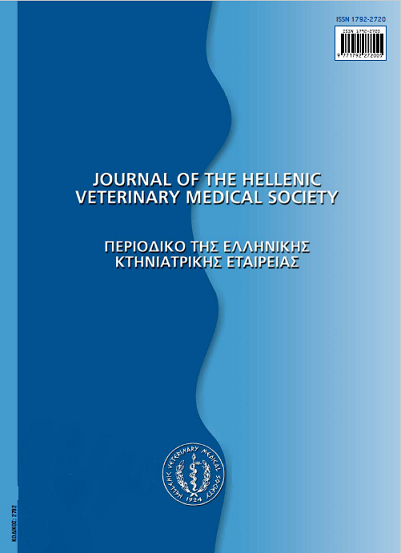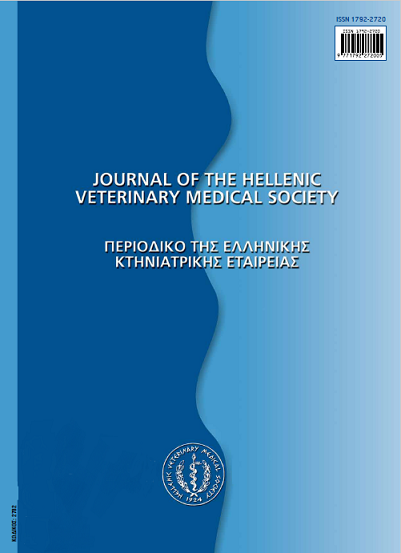Congenital malformations and environment

Abstract
The aim of the present bibliographical review was to approach the most considerable causes, in relation to the unbridled pollution of innumerable areas of our planet. Congenital malformations are created during the prenatal development and could possible cause embryonic death. They become visible after an abortion or after the birth and they could be mild or extensive malformations. Monsters always stimulate the peoplew interest and they were source of superstitions and topic of scientific research as well. In the international bibliography, there are plenty of such cases, and some of them are indicatively referred in the present review. The investigation of the causes of the congenital malformations is of a particular importance, in order to take the necessary preventive measures, when it is possible. The factors, which are responsible for the congenital malformations, are characterized as teratogenic or, insome cases, as embryo- or fetotoxic factors, and usually affect the genital cells of the parents or the organs of the pregnant female. A very important role in the mammalian congenital malformation play, except of the teratogenic factors, the animal species, the placenta type, the histochemical background of the mother and the embryo as well as the stage of the prenatal development during the exposition to the teratogenic factor. The teratogenic factors can be genetic or environmental. During the prenatal development, there is an interaction between the genome, which insure the genotypic feature of the species and the different epigenetic process, which create the phenotypic varieties. The interaction of the genome with the microenvironment, where the embryo is developed, is usually the key of the congenital malformation. Every genetic disturbance leads to the deviation from the normal development, because the embryonic development is depended on the genome. Genetical disturbance is possible to arise because of some chromosomal atypical or abnormal genes or (endo - or - exogenous) environmental factors. The environmental factors are numerous and according to their nature they can be classified to the following categories: physical factors, chemical agents and biological agents. Physical factors are the ionizing and the non - ionizing radiations.
A new type of environmental pollution has been raised, after the artificial production of the radiations. A very important role in the increase of the cases of congenital malformation play the ionizing radiation, as a free nuclear energy after the bombing, the nuclear accidents and the nuclear litter. The ionizing radiation, as well as the radiowaves and the microwaves, known as radiofrequency or radiomagnetic radiation, include low energy. Their radio-embryotoxicity is not negligible, however, and depends on the area of the spectrum, the power density, the "special absorption rate", the duration of the exposure, the sensitivity of the embryo fetus and its organs. A lot of chemical substances adversely intervene in the normal embryonic and fetal development, causing congenital malformations. These substances could be natural having their origin from the external environment or from the organism itself or they could be artificial. Most of the drugs are considered as suspicious teratogens. Some plants contain dangerous embryotoxical substances and pregnant animals must not consume them. The deficiency of some nutrients is possible to cause disturbances in the prenatal development. Moreover, congenital malformations are observed after the deficiency of some elements. Infection agents, such as viruses, bacteria, protozoa, fungus and parasites, when they pass through the placental barrier are possible to cause congenital malformations. Also, the vaccination of the pregnant animals has to be avoided or to be applied on a period that is not critical for teratogenesis. Furthermore, there are a lot of unknown teratogenic agents that usually cause a considerable rate of congenital malformations. During the early embryonic development, there is a "critical period" where the embryo is particularly sensitive in the teratogenic agents. It is obvious that, if any teratogenic agent affects the embryonic development during the "critical period", the normal development of the embryo will be disorganized resulting in the embryonic deformities. In the full text of this review a detailed analysis of what can happen during this period is discussed. In the second half of the former century, the frequency of the congenital malformations has been considerably increased in human being and in animals, as well. This phenomenon is supported by a series of real events and situations, such as: the uncontrolled use of the nuclear energy and the nuclear accidents, the pollution by the major as well as the minor polemic conflicts, the unrestrained industrial development, the production of an enormous number of chemical substances, the increase of the fumes, the uncontrolled spreading of the electromagnetic radiation, the over consumption of industrial elaborated aliments, the malnutrition, the overexploitation of the land, with an excess of chemical fertilizing, pesticides and plant hormons, as well as the irresponsible use of hormones, drugs and unusual feed for livestock. The restriction of the continuing pollution and the simultaneous recovery of the environment must be the target of the humanity. The protection of the environment, beyond the improvement of health generally and the welfare of the animals and human will contribute in the diminuition of the congenital malformation cases in newborn animals and in human, as well.
Article Details
- How to Cite
-
MAGRAS (Ι.Ν. ΜΑΓΡΑΣ) I. N., & TSILIGIANNI (Θ. ΤΣΙΛΙΓΙΑΝΝΗ) T. C. (2018). Congenital malformations and environment. Journal of the Hellenic Veterinary Medical Society, 54(2), 154–164. https://doi.org/10.12681/jhvms.15845
- Issue
- Vol. 54 No. 2 (2003)
- Section
- Review Articles

This work is licensed under a Creative Commons Attribution-NonCommercial 4.0 International License.
Authors who publish with this journal agree to the following terms:
· Authors retain copyright and grant the journal right of first publication with the work simultaneously licensed under a Creative Commons Attribution Non-Commercial License that allows others to share the work with an acknowledgement of the work's authorship and initial publication in this journal.
· Authors are able to enter into separate, additional contractual arrangements for the non-exclusive distribution of the journal's published version of the work (e.g. post it to an institutional repository or publish it in a book), with an acknowledgement of its initial publication in this journal.
· Authors are permitted and encouraged to post their work online (preferably in institutional repositories or on their website) prior to and during the submission process, as it can lead to productive exchanges, as well as earlier and greater citation of published work.



